Types of Peaches: Freestone, Clingstone and More Peach Stone Types
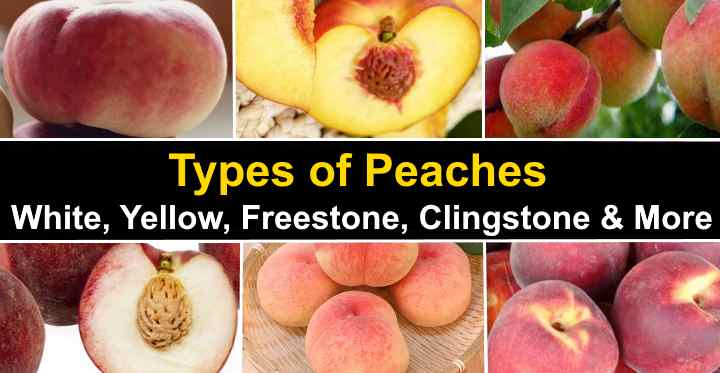
Peaches are juicy fruits that contain a large stone in the middle and have yellow or white flesh. Many people say that peaches with white flesh are usually sweeter and less acidic than peaches with yellow flesh. However, yellow peaches tend to be more popular in Western countries. Their tangy sweetness, juicy flesh, and amazing flavor make peaches popular fruit in most countries. There are over 2,000 varieties of peaches, one of which—a peach without fuzzy skin—is called a nectarine.
The sweetest varieties of peaches are the ones with clingstones and yellow or white flesh. Some examples of sweet peaches include the Elberta with rich sweet yellow flesh, the large Empress with a juicy texture, the small Honey Babe, the white-fleshed sweet Polly peach, and the deliciously juicy sweet Red Haven. Of course, those are just a few of the many delicious varieties of peaches you can buy or grow.
What is The Best Peach to Buy?
In order to select the best type of peaches you need to consider how you use them: eating, baking or canning (preserving). For example, the best type of peaches for baking are freestone peaches, whereas the best peaches for preserving are clingstone peaches. The best and easiest peaches for eating are sweet and juicy peaches that have freestones and have firm yellow or white flesh. Some kinds of peaches such as “Cresthaven,” “Glohaven,” “Improved Elberta,” and “Red Haven” are the best types for eating fresh, canning, freezing, and using in baked goods. These all-rounder peaches resist browning, and they are large fruits with good sugar content and medium acidity.
Peach Trees
Peaches—botanical name Prunus persica—are native to Northwest China. Growing peach trees requires that the climate is dry and sunny, such as in temperate or continental areas. For the sweet, juicy fruits to ripen, the trees need a chilling period in winter. Then hot summers with temperatures between 68°F and 86°F (20°C – 30°C) are required to ripen fully.
You can plant peach trees in your garden if you live in USDA zones 4 to 9. Peach trees grow to between 10 and 13 ft. (3 – 4 m) if you prune them properly. If you have a compact garden or space is limited, then you could grow a dwarf variety of peach tree. Some types of dwarf peach trees that produce delicious fruit are “Stark Saturn,” “Golden Gem,” “Southern Sweet,” “Redhaven,” and “Bonanza II.”
In this article, you will learn about many of the most popular peach varieties—sweet and tart ones. You’ll find out about white donut peaches, nectarines, large yellow peaches, and many more. Descriptions and pictures will help you identify which of these peaches are your favorite.
Stone or Pits in Peach (Peach Stone Types)
Peaches are a type of drupe because they have a hard stone or pit in the middle. This stone protects a seed that is said to taste similar to almonds. Peaches are divided into three categories depending on the type of pit they contain.
Freestone
Peaches in the “freestone” category have flesh that easily comes away from the stone. The different kinds of freestone peaches such as “Early Amber,” “Fay Elberta,” “Glohaven,” “Golden Jubilee,” and “Loring” tend to be large peaches with yellow flesh. Peaches with freestones are the most popular peaches for eating fresh. They also have firm yellow or white flesh with a sweet taste. They are not as juicy as clingstone peaches.
When it comes to the best peaches for baking, freestone peaches are ideal. Cutting through the peach allows the stone to fall out. So, they are easier to prepare for cooking than clingstone peaches. Use freestone peaches for freezing, canning, baking, and eating fresh.
Clingstone peaches
As their name suggests, clingstone peaches have flesh that hugs tightly to the stone. In some varieties, it seems almost impossible to remove the pits from the flesh. Some common types of clingstone peaches include “Flordaking,” “Garnet Beauty,” “Halford,” “June Gold,” and “Ruby Prince.”
Compared to freestone peaches, clingstones have softer flesh that is juicier and sweeter. The flesh color tends to be yellow, making clingstone peaches more acidic than white freestone peaches. Because they are more difficult to eat fresh, clingstone peaches are rarely sold in stores. However, they are usually the type of peaches you’ll find in desserts, cans, jams, and jellies.
Semi-freestone
Semi-freestone peaches are a hybrid of freestone and clingstone peaches. These types of peaches such as “Red Haven,” “Florida Dawn,” “Dixie Red,” and “Coronet” can be white or yellow peaches and have a tart to sweet flavor. Many varieties of nectarine peaches have semi-freestones.
Color of the Peach Flesh
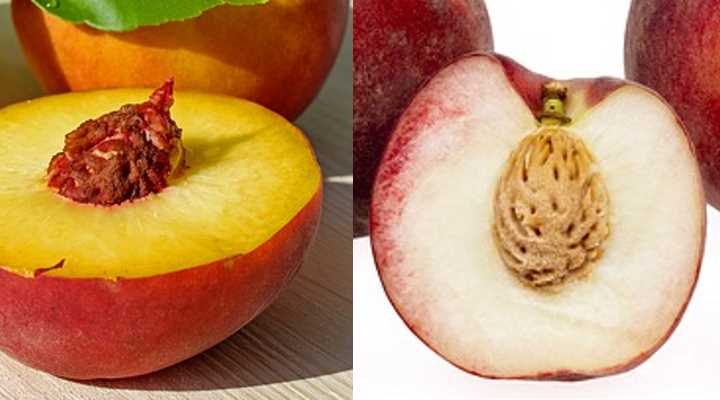
The other method of categorizing types of peaches is by the color of their flesh.
Yellow peach
Peaches with yellow flesh are the most popular types of peaches in Western countries. Depending on the variety of peach, the flesh can be any shade of yellow from light yellow to deep amber. In some types of peaches—especially clingstones—the flesh becomes redder the closer it is to the stone.
Compared to white peaches, yellow peaches have a more acidic yet sweet taste. Some examples of yellow peaches are “Desert Gold” (clingstone), “Elberta” (freestone), “Gala” (freestone), “Redgold” (freestone), and “Galaxy” (donut freestone).
White peach
Peaches with silvery-white flesh are more prevalent in Asian countries. The main difference between the two types of peach varieties is the color of flesh. Both white and yellow peaches are sweet; however, many say that white peaches are less acidic and more delicious than yellow varieties.
Some examples of white peaches are “Arctic Supreme” (clingstone), “Belle of Georgia” (freestone), “Polly” (freestone), “Snow Beauty” (freestone), and “White Heath Cling” (clingstone).
Are Nectarines a Type of Peach?
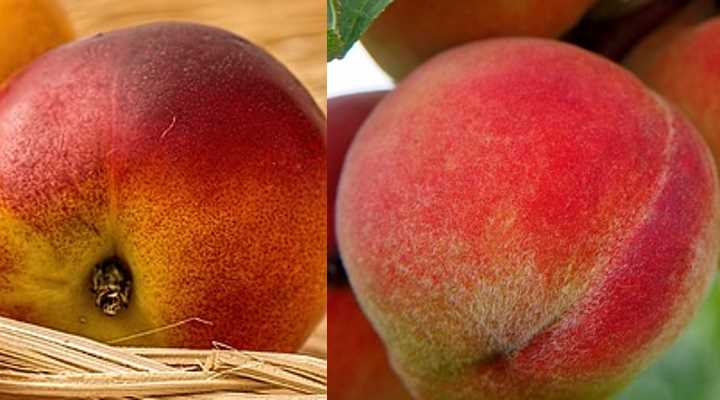
Nectarine vs peach: nectarine (left) is a type of peach (right) with a smooth skin
Nectarines—botanical name Prunus persica var. nectarina—are also a type of peach. Many people assume that nectarines are a kind of hybrid peach. However, nectarines are a true member of the peach family. The only difference between nectarines and peaches is their smooth, shiny skin. Nectarines are described as “peaches without fuzz,” “shaved peaches,” “or fuzzless peaches.”
Types of Peaches with Their Picture and Name
Let’s look in more detail at the various varieties of peaches that you can find in the store or grow in your garden.
Redhaven
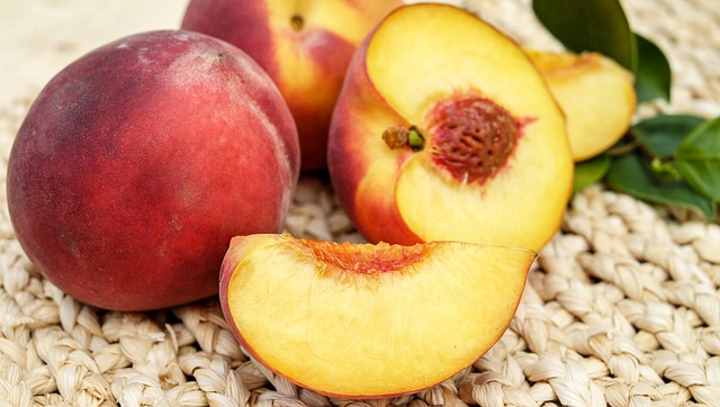
Redhaven peaches are a type of semi-freestone peach that are medium-sized with yellow flesh. For many fruit lovers, Redhaven peaches are the “classic” peach with sweet yellow, firm flesh. This versatile, delicious peach is perfect for eating fresh, canning, or freezing. Because the flesh doesn’t turn brown, they are also perfect peaches for fruit salads.
Redhaven peaches are one of the first peach trees to ripen in the season. The trees are self-fertile, so you only need to plant one of them in your garden.
Newhaven
Newhaven peaches are medium-sized, very sweet peaches with little acidity. This peach variety is similar to Redhaven peaches—only they are smaller and sweeter. They have juicy yellow flesh surrounded by red with sometimes yellow sides, and the flesh separates well from the pit. These mildly firm peaches are also great for freezing and canning. The trees are cold hardy—so you can grow them in cooler climates.
Golden Glory (Dwarf Peach Tree)
Golden Glory peaches are popular types of fruits from dwarf fruit trees. Despite growing on small peach trees, the peach fruits are very large—in fact, they are the largest peaches of all the dwarf peach trees. They are freestone peaches that have excellent, delicious flavors. Due to the short stature of these trees, Golden Glory peaches can grow in containers on patios or balconies.
Loring Peach
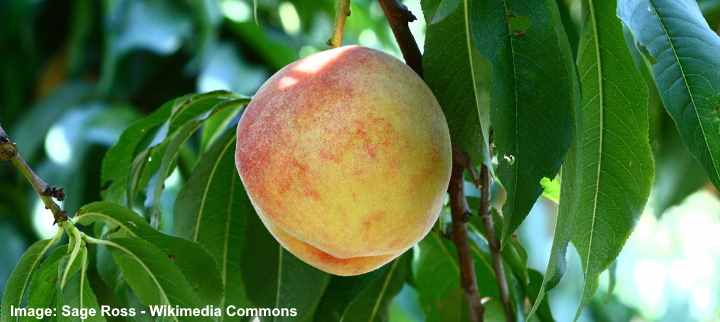
Loring peaches are a large type of drupe within the freestone category of peaches. These large yellow peaches are prized for their excellent flavor, sweet taste, and firm yellow flesh. Despite being a yellow peach, Loring peaches are low in acidity and are deliciously sweet.
Many people consider the Loring peaches as one of the best types of peaches because of their sweet taste that is deliciously fresh. In addition, its firm texture makes these peaches excellent for canning or freezing.
Veteran
Veteran peaches are in the freestone category and have yellow, soft flesh and yellow skin. This peach variety isn’t the best for eating fresh and tastes better when canned or used in baked goods. You can grow Veteran peach trees in zones 5 to 8, and they are exceptionally hardy plants.
June Gold
One of the tastiest and juiciest peach varieties is the June Gold. As the name suggests, the medium-sized peach has golden-yellow flesh with yellowish skin and red blushes. The flesh is described as medium-firm which clings stubbornly to the pit as it is a clingstone peach. June Gold peaches are juicy and perfect for eating straight off the tree.
Red Globe
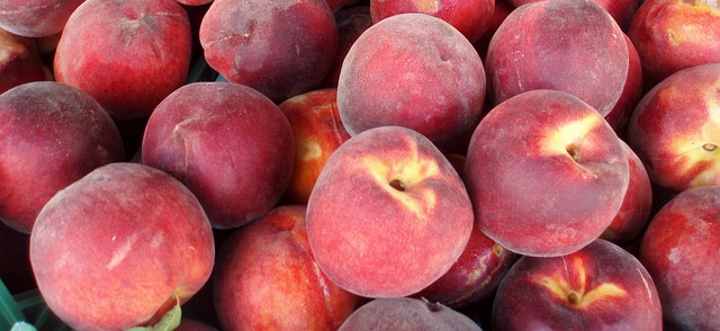
Red Globe is a deliciously large, freestone peach with sweet, firm flesh that is juicy when you bite into it. These peaches have bright, golden yellow flesh with red fuzzy skin. The peaches are about the size of a baseball. Because these are freestone peaches, they are perfect for fresh eating, home baking, canning, freezing, or making ice cream.
Red Globe fruit trees produce ripe fruit in July.
Harmony
Harmony peaches are large yellow peaches with orange skin and a dark red cheek. The delicious flesh of this freestone peach is a bright yellow that turns to bright red near the stem end. The peach fruit isn’t one of the most attractive types of peaches. However, biting into the flesh reveals incredibly juicy yellow flesh with sweetness and slight acidity.
Donut Peaches
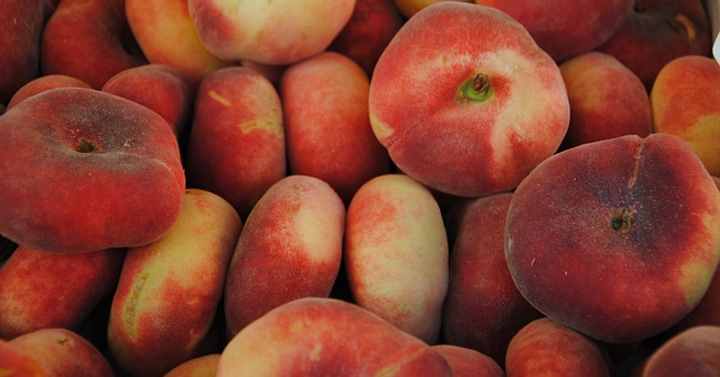
Donut peaches are a relatively new variety of peaches on the market. The only difference between donut peaches and round peaches is their flattened disc-like shape. Apart from that, they taste the same as regular peaches. Let’s look at two varieties of donut peaches.
Saturn donut—The original “Saturn” donut peach was a clingstone with white flesh and sweet taste. Other types of “Saturn” donuts have been bred to have a juicy yellow flesh with a freestone.
Galaxy donut—This is another good type of flat peach that has an excellent taste and is easy to bite into. This freestone donut variety has sweet, golden yellow flesh with yellow skin.
Harko Nectarine
Choose Harko nectarines if you want to grow one of the tastiest nectarines. Harko nectarines are a type of clingstone peach with an excellent flavor and shiny red smooth skin without fuzz. These cold-hardy fruit trees produce nectarines that have bright yellow flesh that tastes deliciously sweet.
Polly Peaches (White Peaches)
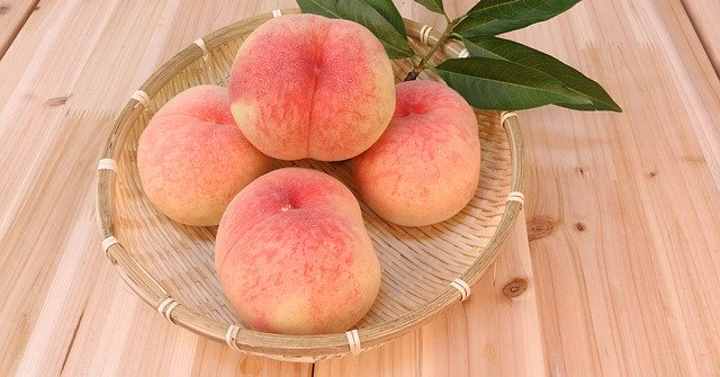
Polly peaches are in the freestone category of white peaches. The peach skin is pale with red blushing, and the flesh is almost translucent white. The juicy drupe fruits are best eaten fresh, as their tender flesh doesn’t hold up well when used in baking or cooking.
Polly peach trees are also hardy fruit trees that can withstand temperatures down to -20°F (-28°C). These are one of the sweetest and best-tasting white peaches to try.
White Heath Cling
As the name suggests, White Heath Cling peaches are clingstone peaches with white flesh. The juicy flesh is full of sweetness with low acidity and is delicious to eat fresh or preserve in cans for consumption later in the year. The medium to large peaches have white skin with light red blushing.
White Lady
One of the sweetest white peaches you can try is the White Lady. This large peach variety has high sugar content and low acidity. The fact that it is a freestone variety means it’s perfect for eating off the tree.
Elberta Sweet Peaches
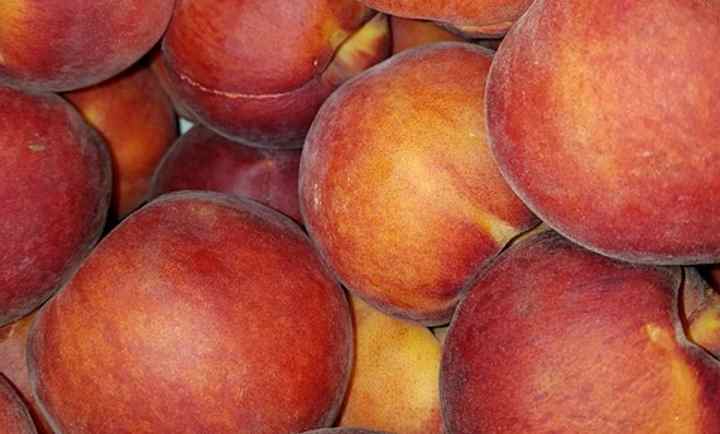
Elberta is one of the sweetest, yellow-fleshed large peaches that you can eat. The golden yellow flesh is firm with a rich taste and not much acidity. Elberta peaches have a yellowish skin with red blushing. Being a freestone type of peach, Elbertas are an excellent variety of peach for canning or using in baked goods.
Elberta peach trees produce baseball-sized stone fruits. The trees are self-fertile and also come in dwarf varieties. So, these peaches are the ideal type of fruit tree if you’ve got a small, compact backyard.
Fairhaven
Fairhaven peaches are large, round, yellow freestone peaches that have a good taste and firm skin. These peaches have red-yellow skin and are slightly fuzzy. Their firm skin and lack of browning mean that Fairhaven peaches are excellent for canning, baking, and freezing.
Belle of Georgia
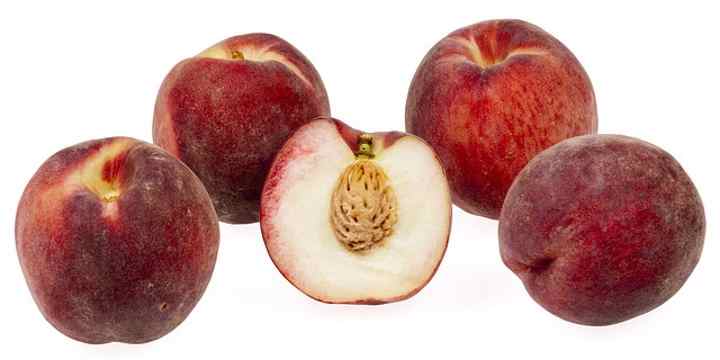
Belle of Georgia peaches are large, white-fleshed, freestone fruits with brilliant red skins. These large sweet peaches are delicious to eat fresh. Because Belle of Georgia peaches have firm flesh, they are great white peaches for baking and canning. The delightful peach self-pollinating trees bloom with pink flowers before large fruits ripen late in the season.
Babcock
Babcock peaches are small to medium white peaches in the semi-freestone peach category. They have a mildly tart taste with hints of sweetness. Babcock peaches are one of the most popular types of peach trees that grow in California and along the West Coast.
Snow Beauty
One of the tastiest white freestone peaches is the Snow Beauty cultivar. The fantastic taste of this white peach variety comes from the high sugar levels and low acidity. The silvery-white flesh is tantalizingly sweet with an award-winning flavor. The large peaches have a deep red skin that covers the juicy white flesh.
Cresthaven
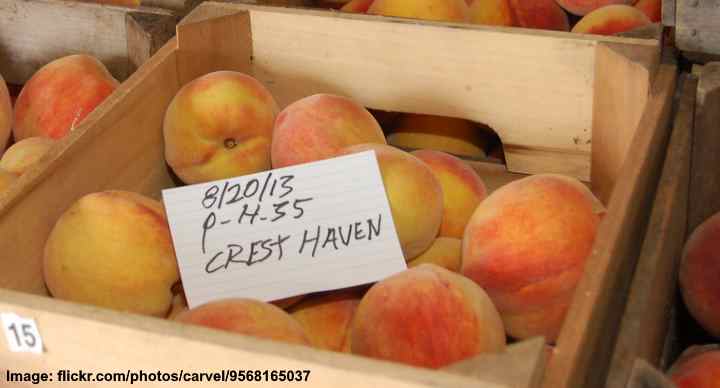
Cresthaven peaches are yellow, firm peaches that have an excellent sweet flavor with hints of tanginess. The peaches are large with deep red skin and categorized as freestone peaches. Due to their resistance to browning and firm skin, Cresthaven peaches are excellent for canning, baking, or using to make peach cobbler.
If you live in a place that has cold winters, Cresthaven peach trees grow well in zones 5 to 9.
Sun Haven
Sun Haven peaches are another type of sweet peach variety with deep golden yellow flesh. This clingstone peach has a fine texture and rich flavor. Because the firm flesh resists browning, the peach is excellent for use as an ingredient in pies and baked goods. Large oval peaches ripening on trees have bright-red skin with a golden-yellow side.
Sunhigh
If you are looking for one of the best types of peaches for canning, then pick the Sunhigh variety. The large oval fruit has flesh that easily comes away from the freestone. The characteristics of Sunhigh peaches are sweet yellow flesh, bright red skins, and an excellent, well-rounded taste. You can also enjoy these peaches fresh.
Related articles:
- Types of Citrus Fruits With their Picture and Classification
- Types of Fruit Trees (With Self-Pollinating Types)
- Dwarf Fruit Trees to Grow Indoors or Outdoors
